Scintillement dans Bandes lumineuses LED peut être un problème incroyablement frustrant. Imaginez que vous essayez de créer une atmosphère calme à la maison pour passer une nuit paisible. Mais soudain, vos lampes LED se mettent à clignoter de manière chaotique. Si vous n'y remédiez pas, ce problème risque de s'aggraver en distrayant et en perturbant votre système d'éclairage.
Le problème du scintillement/clignotement des bandes LED n'est pas seulement une nuisance mineure. Les lumières clignotantes peuvent indiquer des problèmes électriques ou des pièces cassées dans le système. En résolvant ce problème, vous pouvez économiser de l'énergie, prolonger la durée de vie des lampes et garder votre espace de vie confortable.
Ce guide explique pourquoi les bandes LED scintillent, comment diagnostiquer le problème et comment le résoudre.. Cet article vous montrera comment obtenir un éclairage LED sans scintillement. Il aborde les problèmes électriques et l'entretien régulier.
Comprendre le problème
Quels sont les différents types de scintillement ?
Causes du scintillement visible
Le scintillement visible est plus qu'un irritant ; il peut transformer un environnement par ailleurs serein en un lieu de désagrément et de distraction. Voyons quels sont les facteurs déclencheurs les plus courants :
Mauvaise connexion: Une mauvaise connexion peut interrompre le flux d'électricité et provoquer un scintillement. Ce phénomène est généralement dû à un câblage mal fixé ou à des contacts corrodés. L'inspection des connexions et l'assurance qu'elles sont bien fixées permettent souvent de résoudre ce problème.
Bandes LED défectueuses: Les bandes LED peuvent s'user ou devenir défectueuses avec le temps. Parfois, des défauts de fabrication ou l'ancienneté d'un produit peuvent provoquer un scintillement de la lumière.
Alimentation électrique incorrecte: Si l'alimentation électrique n'est pas adaptée à l'appareil, elle peut entraîner des problèmes de tension. Cela entraîne souvent des fluctuations de luminosité, qui peuvent être perceptibles et gênantes.
Causes du scintillement invisible
Le scintillement invisible peut ne pas être apparent à l'œil humain. Il peut néanmoins affecter les performances des bandes LED. Il s'agit d'un problème nuancé, généralement causé par :
Tension d'ondulation: De petites fluctuations dans la tension d'alimentation peuvent provoquer une ondulation de la tension. Bien que cela ne soit pas facilement visible, cela peut affecter le fonctionnement et la durée de vie de votre système d'éclairage.
Mauvaises conditions météorologiques: Les intempéries peuvent affecter votre approvisionnement en électricité, y compris les tempêtes et les conditions météorologiques difficiles. Les bandes LED peuvent scintiller légèrement en raison de petites variations du flux d'électricité.
Why Are My LED Strip Lights Flickering?
Problèmes électriques
Les changements de puissance peuvent être plus qu'ennuyeux ; ils peuvent indiquer un problème plus important. Il s'agit notamment de
Réseau électrique instable: Le réseau électrique peut être instable, ce qui peut nuire au bon fonctionnement de vos bandes LED.
Système électrique obsolète: Le câblage et les composants électriques anciens peuvent ne pas être en mesure de gérer la technologie LED moderne, ce qui entraîne un scintillement.Système électrique obsolète
Mauvaise connexion
Pour que les bandes LED fonctionnent bien, il faut s'assurer que l'alimentation et les lampes sont bien connectées. Voici pourquoi :
Câblage mal fixé: Si les fils ne sont pas bien fixés, les lumières peuvent clignoter en raison de connexions desserrées.
Mauvaise soudure: La soudure nécessite de la précision. Une soudure bâclée peut créer des lacunes dans la connexion et provoquer des scintillements.
Alimentation électrique incorrecte
Une alimentation électrique correcte est un élément essentiel de tout système d'éclairage à LED. Lorsqu'elle est mal adaptée :
Déséquilibre de tension: Si le transformateur n'a pas la bonne tension, il peut endommager la bande lumineuse. Cela peut entraîner un scintillement ou une panne prématurée.
Incompatibilité avec les exigences des DEL: Certaines diodes électroluminescentes nécessitent des caractéristiques de puissance spécifiques. Une inadéquation peut engendrer divers problèmes, dont le scintillement.
Bande LED défectueuse
Les bandes de LED peuvent devenir défectueuses pour diverses raisons, telles que
Usure et détérioration: Avec le temps, la bande peut présenter des dysfonctionnements dus à des dommages physiques, à l'usure et à l'accumulation de poussière.
Dégâts des eaux: Les dommages causés par l'eau peuvent corroder la bande LED, entraînant des perturbations et des irrégularités dans son fonctionnement.
Environnement humide
L'humidité est un tueur silencieux lorsqu'il s'agit d'électronique, et les bandes LED ne font pas exception :
Corrosion des composants: Les zones humides peuvent faire rouiller les pièces, ce qui provoque le scintillement des bandes LED.
Circuits courts: Water can cause short circuits, which can mess up the lighting.
Tension d'ondulation
A stable voltage is critical for the smooth functioning of LED lights:
Voltage Fluctuations: When the voltage changes on the LED strip, it can create a ripple effect that makes the flickering hard to see. While it might not be easily perceptible, it can degrade the lighting quality over time.
Continuous Running of LED
Continuous use of LED strip lights can still cause problems, despite their design for long life.
Surchauffe: If you use something for a long time without taking breaks, it might get too hot. This can cause the voltage to drop and make the lights flicker.
The strain on Components: Continuous running can strain different components. This strain may affect how the light looks and stays the same.
Mauvaises conditions météorologiques
Weather can play a surprising role in LED flickering:
Power Surges and Drops: Storms and bad weather can cause power to go up or down suddenly, making lights flicker.
Indirect Effects on Infrastructure: Bad weather can also indirectly affect the electrical infrastructure, causing unexpected power fluctuations.
Signs and Symptoms
Identifying Flickering and Associated Problems
Detecting problems with your LED strip lights is the first step toward a solution. Look for these signs:
Unusual Dimming: If your LED strip lights dim unexpectedly, it might mean something is wrong.
Random Blinking: Sudden and unexplained blinking clearly indicates something is wrong.
Complete Outages: In some cases, the strip may have total outages or sections that fail completely.
Inconsistent Color or Brightness: Be aware of any color or brightness differences on the strip. These differences could indicate faulty connections or worn-out sections.
Diagnosing and Fixing Flickering LED Strip Lights
How to Stop Visible LED Strip Lights from Flickering?
Inspection
Regular inspections are the first step toward maintaining a flicker-free LED system. An eye for detail can uncover potential issues before they become major problems:
Loose Connections: Identifying and tightening loose wires or connections can often resolve flickering.
Water Damage Inspection: To check for water damage, look for signs of moisture in wet areas like bathrooms and outdoor installations. Take steps to stop water from getting into the connections.
Physical Defect Checks: Make sure to check the LED strip often for any cracks, wear, or other physical issues. Early detection can save you both time and money in the long run.
Replace Incompatible Parts
It is important to harmonize the parts of an LED system for a steady glow. Here’s what to keep in mind:
Matching Transformers and LEDs: Ensure that the transformers and LEDs are compatible. Research and consult the manufacturers’ guidelines to select the right parts.
Regular Updates: To avoid problems, keep up with new LED technology as it changes rapidly.
Professional Guidance: When in doubt, seek professional assistance. Sometimes, you need an expert eye to identify mismatched components.
Replace the LED Driver
The LED driver plays a critical role in the smooth functioning of LED strip lights:
Driver Compatibility: Make sure the LED driver matches your LED strip light’s specifications. A mismatched or faulty driver can lead to flickering.
Timely Replacement: Replace a defective or wrong-sized LED driver with a suitable model as soon as possible. This could be a simple and effective fix for your flickering problem.
Quality Products: Invest in high-quality drivers from reputable manufacturers. Cheap, off-brand drivers might save you money initially but could lead to problems.
Checking Voltage
Steady voltage is vital for the optimal performance of LED lights:
Regular Voltage Monitoring: Use a multimeter to monitor the voltage regularly. Any fluctuations might be an indication of a more significant issue.
Adjusting when needed: Make adjustments for a stable power supply if you find voltage inconsistencies. Consult an electrician if you need help with how to proceed.
Understanding Your Power Needs: To figure out how much power your LED system requires, research its requirements. Understanding your power needs is crucial for preventing flickering.
How to Fix Flickering LED Strip Lights?
Use Low Voltage DC LED Strip Lights with LED Drivers
LED strip lights can prevent flickering with low voltage and the correct drivers.
Selecting the Right Products: Choose LED strip lights with low-voltage DC to reduce flickering.
Combining with Compatible LED Drivers: When you use LED strip lights with the right drivers, the brightness stays the same.
Installation Expertise: Proper installation is as crucial as the right product selection. If you need extra time, hiring a pro will ensure proper setup.
Use Dimming Power Supplies with High-Frequency PWM Output Signal
This sophisticated solution offers precise control over your lighting system:
Understanding PWM (Pulse Width Modulation): PWM (Pulse Width Modulation) is a technology that helps control voltage and brightness to reduce flicker.
Selecting Suitable Power Supplies: Look for power supplies that offer High-Frequency PWM Output. They are specifically designed to reduce or eliminate flickering.
Consulting a Specialist: This can be a complex area. Get advice from a lighting expert to find the best solution for your needs.
Resoldering Connections
Sometimes the solution is as straightforward as a good soldering job:
Inspecting Connections: Check the soldered connections for breaks or cracks that could stop the circuit.
Proper Resoldering Techniques: To make a strong connection, use the right tools and techniques for soldering.
Assistance professionnelle: If you want to feel more confident with soldering, ask a professional for help. A poor soldering job can lead to more problems.
Keeping Components Clean
Dust and grime aren’t just ugly, they can cause invisible flickering.
Regular Cleaning Schedule: Create a regular cleaning schedule to clean the LED strips and their parts. Dust and grime can accumulate over time, affecting performance.
Using Appropriate Cleaning Products: Use cleaning products that are safe for electronics. Harsh chemicals can damage the components.
Consider Environmental Factors: If your LED strip lights are dirty, protect them by encasing or shielding them.
Choosing the Right Power Supply and Components
The correct power supply and components blend doesn’t just light up your space. It sparks life into it. Let’s discover how to choose the right mix to turn a boring room into an exciting one.
Comprendre les besoins en énergie
Understanding the power requirements is crucial to set up the ideal lighting environment. It’s not just about bulbs and wires; it’s about engineering the perfect ambiance.
Choisir la bonne bande LED
When selecting LED strip lights, consider how they look, work, and if they fit. Here’s a guide to making an informed choice:
Compatibility with Transformers: Matching LED strip lights with the right transformer is crucial for perfect lighting. Check the voltage and wattage to ensure a perfect fit.
Understanding the Space: Different spaces may require different types of LED strips. When selecting lighting, consider the brightness, color, and direction based on how the room will be used.
Efficacité énergétique: Choose LED strip lights that are energy-efficient and give off bright light without using too much power.
Consulting Professionals: If you are lost in the maze of options, feel free to seek professional guidance. Lighting experts can tailor solutions to your specific needs.
Investing in Proper Power Supplies
The power supply is the heartbeat of your LED system, pumping life into every nook and corner. Here’s why investing in quality power supplies is a non-negotiable requirement:
Meeting LED Requirements: Each LED system has specific power needs. Good power supplies meet these needs exactly, providing steady and reliable performance.
Considérations de sécurité: A good power supply is important for performance and safety. It protects the system and the user.
Long-Term Savings: Buying a quality power supply may be more expensive initially, but it saves money in the long run. It prevents issues and prolongs the life of the LED system.
High-Quality LED Power Supply
Regarding LED lighting, there are better places to cut corners than the power supply. Investing in a top-tier LED power supply opens doors to various benefits:
Consistency in Performance: A high-end power supply provides steady voltage, ensuring your LED strip lights glow consistently.
Enhanced Longevity: Quality power supplies are built to last, reducing the need for frequent replacements.
Efficacité énergétique: Premium LED power supplies are often designed with energy-saving technology, contributing to a greener environment and lower electricity bills.
Garantie et assistance: Many top-tier power supplies come with extensive warranties and customer support, offering peace of mind and assistance when needed.
Dimmers
Dimmers let you control and adjust your lighting to set the perfect mood. But not all dimmers have equal creation, and compatibility becomes critical.
Understanding Compatibility: Ensure the dimmer is designed to work with your LED strip lights. Compatibility issues can lead to flickering or even damage.
Ease of Installation: Look for dimmers that offer straightforward installation. Complicated setups require professional installation, adding to costs.
Functionality and Features: Modern dimmers have various features, such as remote control, voice command, or app integration. Choose one that fits your lifestyle and preferences.
Eco-Friendly Options: Many dimmers are designed with energy-saving features. Opting for an eco-friendly dimmer is a step towards responsible consumption.
Preventive Measures to Avoid Future Flickering
A proactive approach to LED strip lights’ flickering not only saves you from future hassle but also keeps the charm and vibrancy of your lighting intact. Here’s a comprehensive guide to preventive measures to keep your lights shining bright and steady.
Regular Maintenance and Inspection
To maintain your LED strip lights, be observant and attentive to minor details. Let’s explore the necessary steps.
Routine Checks
A little care goes a long way. Regular inspections carried out with an eye for detail, can prevent a whole host of problems.
Visual Inspection: You can quickly check for obvious problems by looking at the item. Make it a habit to scan your LED strip lights periodically.
Physical Examination:
Gently tug at the connections.
Feel for uneven surfaces.
Check for loose or exposed wires.
Addressing these issues promptly can prevent them from escalating.
Professional Assessment: If you need clarification or something seems off, feel free to call in a professional. Their expertise can uncover hidden issues and provide the necessary remedies.
Quality Components and Usage Guidelines
For a smooth experience, use high-quality parts and follow the instructions to avoid flickering.
High-Quality LED
In the world of LED lighting, quality matters immensely. Here’s why investing in superior LED strip lights is a wise decision:
Durabilité: High-quality LED strip lights are manufactured with better materials and craftsmanship, translating to a longer life and consistent performance.
Efficacité énergétique: Quality LEDs often come with energy-saving features, delivering optimal brightness without guzzling electricity.
Manufacturer Support: Reputed brands usually offer better warranties and customer support, securing your investment.
Brightness Adjustment
LED strip lights are appealing because they can be easily adjusted to different brightness levels. But be mindful of these guidelines:
Avoid Excessive Tweaking: Constantly adjusting brightness levels can strain the LEDs, leading to flickering. Please find your ideal setting and let it be.
Use Compatible Dimmers: If you love playing with brightness, invest in a compatible dimmer designed to work smoothly with your LED strip lights.
Installing A Filter
Voltage fluctuations can be a silent menace, causing subtle flickering. Filters can be a simple yet effective solution:
Choose the Right Filter: Consult a professional or refer to your LED strip lights manual to select a filter that fits your system’s requirements.
Proper Installation: Ensure the filter is installed correctly, adhering to the manufacturer’s guidelines. An improper installation can lead to other issues.
Give Them a Break
Your LED strip lights are made to run continuously, but taking a short break can be helpful.
Schedule Off Times: If possible, schedule periodic off times, especially in areas with unnecessary lighting. It extends the LEDs’ life and conserves energy.
Monitor Performance: If you notice a decrease in performance after long-running periods, it might be a sign that your lights need a break.
Cable Connection
The lifelines of your LED strip lights, the cables, need proper attention:
Quality Cables: Invest in cables that match the specifications of your LED strip lights. Low-quality cables can degrade over time, leading to flickering.
Proper Soldering: Whether it’s a DIY project or a professional installation, ensuring the cables are correctly soldered and connected will enhance the longevity and efficiency of the LED strip lights.
Gestion des câbles: Keep cables organized, avoiding unnecessary bends and twists. It maintains the integrity of the connections and provides a neat appearance.
Professional Help and Additional Resources
We’ve explored the intricacies of diagnosing, fixing, and preventing LED strip light flickers. Yet, sometimes the solutions fall beyond the realm of do-it-yourself. In these situations, it’s important to know when to ask for help and use the right tools and products. Let’s delve into these crucial aspects.
When to Seek Professional Assistance
A blinking strip light can indicate complex issues, requiring assistance from an expert. Electrical systems can be complex. Trying to fix them without knowledge might make things worse or be unsafe. Here’s a roadmap to understanding when professional assistance becomes necessary:
Persistent Flickering: If you’ve attempted the previously mentioned solutions and the flickering persists, it may indicate a more complex problem. A professional electrician can unearth hidden issues that might escape an untrained eye.
Unfamiliar Territory: Are you still trying to figure out the cause or the solution? That’s a vital sign that a professional should take over. Their vast experience and expertise can pinpoint the issue quickly.
Safety Concerns: Handling electrical components can be risky. If at any point you feel that you need more depth, feel free to call a professional. Safety should always be the priority.
Warranty Considerations: Sometimes, tampering with LED components might void a warranty. If your LED strip lights are still covered by warranty, it’s a good idea to get professional help.
Commercial Installations: Regulations and standards must be followed in business or commercial settings. An accredited professional ensures compliance with all relevant laws and standards.
Tips for Hiring a Professional
Check Credentials: Ensure that the electrician is licensed and insured. These credentials show that they have the required training and are prepared for the job.
Ask for References: Previous customers’ experiences can give you a clear picture of the professional’s quality of work. Be bold in asking for and checking references.
Get Multiple Quotes: Don’t settle for the first quote. Looking at different quotes can give a fair view of the cost and size of the work.
Recommended Products and Tools
To get rid of flickering in LED strip lights, we need good tools and products. They are often overlooked, but they play a crucial role. Using the correct tools helps the fixes last and makes the process easier. Here’s a guide to some essential items:
Quality LED Drivers: A driver that matches your strip lights’ specifications is fundamental. Make sure to research reliable brands. Also, check if the driver meets voltage and current needs.
Soldering Kits: A quality soldering kit can make the job precise and easy if you’re inclined to fix loose connections. Look for one with adjustable temperature controls for versatility.
Multimeter: A multimeter is an indispensable tool for diagnosing electrical issues. It helps in checking voltage, current, resistance, and continuity.
Dimming Modules: If brightness control is essential, investing in compatible dimming modules can prevent flickers. Check the reviews of the product to make sure they are for your LED strip lights.
Voltage Stabilizers or Filters: As we’ve discussed, voltage fluctuations can cause flickering. Quality voltage stabilizers or filters can keep the voltage steady, ensuring smooth lighting.
Cleaning Supplies: Regular cleaning can prevent invisible flickers. Stock up on non-abrasive cleaning materials suitable for electrical components.
A Word on Online Resources
Manufacturer’s Websites: Many times, manufacturers provide detailed guides, video tutorials, and customer support to assist with common issues.
Online Forums and Communities: Engaging with others who have faced similar issues can provide insights and solutions that are tried and tested.
FAQs About Flickering LED Strip Lights
Why do my new LED strip lights flicker?
This could be due to incompatible parts, poor connection, or incorrect power supply. Ensuring that the components match and connections are secure often resolves this issue. Our blog post provides an in-depth look at the solutions you need.
Can flickering LED strip lights cause any harm?
Continuous flickering can shorten the lifespan of LEDs and may indicate electrical issues. To prevent lasting harm, it is smart to identify and repair the issue.
How do I prevent flickering in LED strip lights in the long run?
To prevent problems, use good LED lights, connect cables correctly, and let lights rest. In our blog post, we have a section about things you can do to prevent flickering.
Is it necessary to hire a professional electrician to fix the LED strip light flickering?
You don’t always need a professional, but it’s crucial when DIY fails or you’re unsure. If you need help, our guide can help you decide if you should get professional assistance.
What tools do I need to diagnose and fix LED strip light flickering?
You need important tools like a good soldering kit, a multimeter, and cleaning supplies. We have a section with recommended products and tools for successful repairs.
Can dimmers cause LED strip lights to flicker?
If dimmers are incompatible with your LED strip lights, they might cause flickering. To fix this issue, use dimmers made for your LED lights and install them correctly.
How do I choose the suitable power supply to prevent flickering?
To meet the LED’s needs, choose the right transformer and invest in good power supplies. Check out our blog post for helpful advice on picking the right power supply.
How can I tell if my LED strip light flickering is invisible, and how do I fix it?
Invisible flickering may not be seen by the naked eye, but it can impact sensitive equipment. To solve the problem, you can use low-voltage DC LED strip lights. Make sure to use the right drivers and fix any loose connections. Check our section on invisible flickering for a comprehensive guide.
Can you find out what makes LED strip lights flicker before you can see it?
Regular inspections and routine checks can prevent flickering. These inspections find damages or loose connections. To find problems early, use good parts and follow the rules for how to use them.
What are some trusted brands for LED drivers and other tools needed to fix flickering?
Different places have different brands. It’s a good idea to research and choose reliable, quality brands. To choose the best products, read reviews, check ratings, and ask experts for advice.
How to choose a flicker-free LED strip?
To choose a flicker-free LED strip, focus on high-quality drivers, ensure a high PWM frequency (above 20 kHz) for dimming, match the voltage with your power supply, select reputable brands, read reviews, check for dimmer compatibility, and look for flicker-free certifications.
Conclusion
To prevent LED strip lights from flickering, you should learn about the different types, symptoms, and ways to diagnose the issue.
If your LED strip lights are flickering, take action today. Ignoring the problem can lead to further complications down the line.
We hope this guide has been informative and helpful. Share your experiences or seek personalized assistance to make your home lighting flawless. Your feedback and queries are always welcome!
Light up your world with Unitop, a top Bandes lumineuses LED et Flexible à néon LED maker in China. We show our dedication to quality by being experts and skilled in everything we make. Have further questions or unique requirements? Nous contacter immediately. With Unitop, light your path with confidence and elegance in the LED industry.

Tom est maintenant le directeur des ventes de Unitop (China) Co., Limited. Il a été dans le Éclairage LED l'industrie depuis 2005. Il est expert en ventes et marketing, et en gestion d'usine. Il aime le bodybuilding, et il est aussi un fan fou d'Apple ! C'est un travailleur acharné qui aime apprendre et essayer de nouvelles choses.
Email : tom@unitopledstrip.com WhatsApp : +86-18680307140


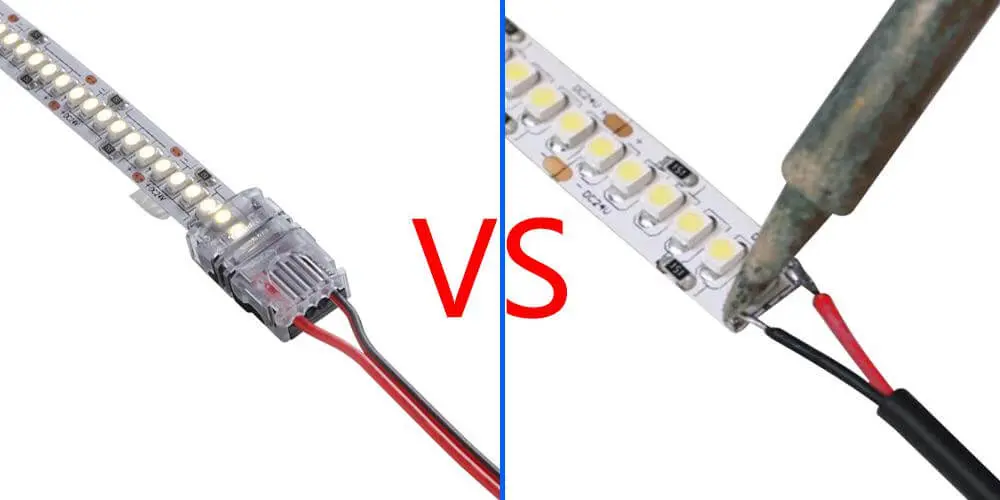
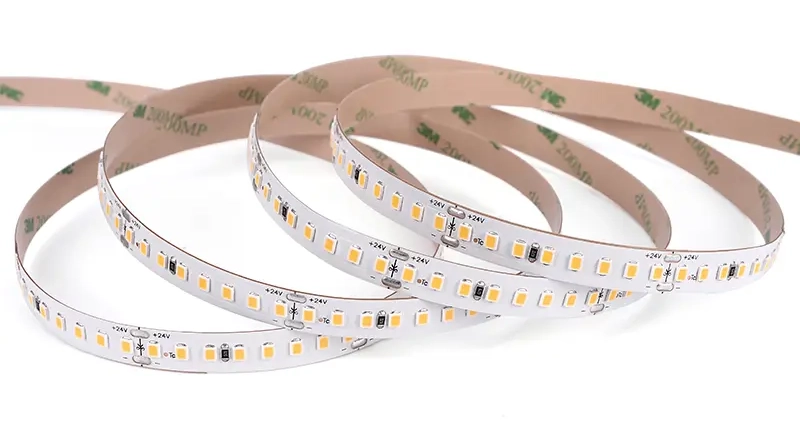
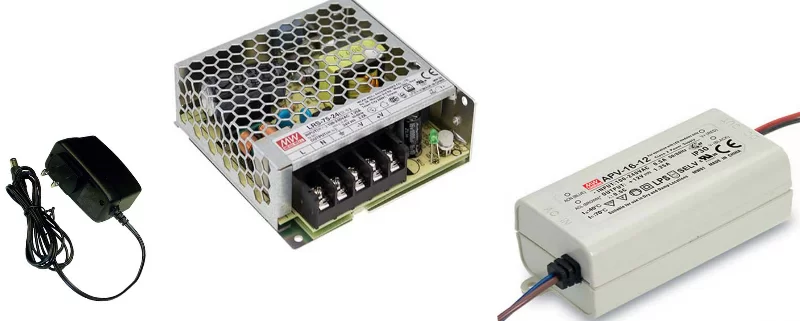
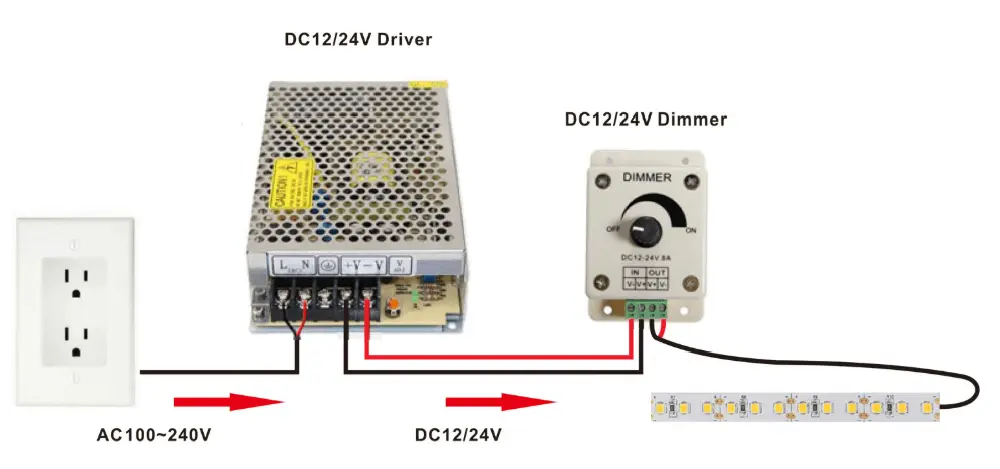
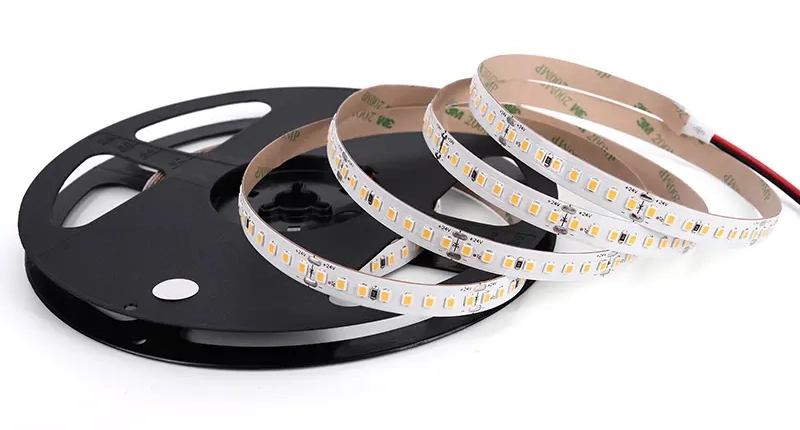


Laisser un commentaire
Rejoindre la discussion?N’hésitez pas à contribuer !